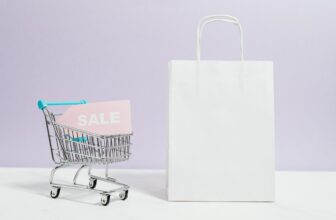For quite awhile, the marketing world has preached the practicality of the Sales Funnel to take a customer from the moment they first become aware of your brand, to the moment they make their first purchase.
The steps allow for multiple points of contact between your business and your prospective customers, helping to educate them on your product, gain their interest, and encourage them to that long-awaited conversion, when they officially become customers of your business.
Something Beyond the Sales Funnel
But what happens after that? The unwritten rules of marketing have long preached that a return customer is the most valuable customer a business can have, and that attracting new customers is at least twice as expensive than retaining satisfied customers.

In the traditional sales funnel model, however, the purchase is made, and then the process is presumably repeated infinitely. This isn’t an accurate picture of what happens, however. Once a customer is engaged and excited about your brand, they don’t often need the same level of education as they did before.
The newest iteration of the sales funnel is known as the “Hourglass Marketing Funnel”, and takes a deeper look at what happens after the conversion, and the art of customer retention.
What Is the Hourglass Marketing Funnel?
In many ways, the hourglass marketing funnel is very similar to the now-traditional sales funnel, but adds a little more insight into pre and post purchase behaviors and actions.
The term “hourglass” refers to the shape of this new funnel when the steps are drawn out. Though the name may imply it, there is no set time limit or requirement for the actions within this diagram.
Visitors, prospects, and customers will continue to develop along a timeline that makes sense for their needs and goals.
The top of the hourglass marketing funnel is familiar. Starting with brand awareness, the consumer then moves into education or knowledge about a product or service. They are encouraged to do research, and consider and evaluate the options presented to them.
The tip of the funnel comes with the purchase itself. Traditionally, this is where things stop, to be repeated at a later date.

The hourglass marketing funnel argues that the customer doesn’t simply drop out of view once the sale is complete, but that this starts a new wave of the connection between the business and the buyer.
The post-purchase stages include steps that promote relationship management as well as customer propagation.
What Are the Post-Purchase Steps of the Hourglass Marketing Funnel?
The post-purchase steps may differ depending on your business and the specific journey taken by your customers, but the overall concepts include:
- Adoption
- Retention
- Loyalty
- Endorsement
- Advocacy
Adoption
Adoption refers to activities such as onboarding, training, and implementation.
Essentially, this is the process through which the purchase made by the client starts providing them with the value they expect. This part of the process is commonly associated with businesses that provide a service, or a product that requires installation or multiple steps to access appropriately. If your business sells a common, assembled product, such as socks or stuffed animals, this may seem like a foreign concept.
At the same time, this can be a very important time for relationship building.
Customers might not need an onboarding video to help them use their socks, but they will appreciate a business checking in to ensure their order was correct, and that the product they purchased meets their needs as expected.
Retention
Retention focuses on the customers’ satisfaction with their purchase. All customers want to see a value add from their spending, and the retention stage of relationship building focuses on making sure each customer sees a reasonably long-term appreciation for their purchase.
Even though some items may not be used for a long time, the concept of retention indicates that the customer was so pleased with their product that they’ll continue to purchase similar products from your business in the future.
Loyalty
Loyalty is somewhat of a passive stage. The customer may not be directly in the market for your products or services at this stage, but they consider your business the place to go first if a need arises.
In order to reach and maintain this stage, a customer needs to have confidence in the brand and its offerings.
Endorsement
Endorsement, on the other hand, involves previous customers actively sharing their positive feedback regarding your business. Social proof marketing is incredibly popular and effective today, and each satisfied customer who shares their experience can help attract and retain customers without requiring additional action from you.
Advocacy
Advocacy is the ultimate stage of the hourglass marketing funnel.
This is the stage at which satisfied customers aren’t just sharing their opinions- they’re openly endorsing your business amongst their friends, coworkers, and family members. They may share your social media posts, send links to your site, and tag your products in their own posts.
How Do I Get Started with the Hourglass Marketing Funnel?
The key to success across the hourglass marketing funnel is customer satisfaction.

At the top of the funnel, you provide customers with facts, details, and knowledge. From informational videos and interesting freebies to entice them towards learning more, to emails that provide exclusive insight and offers, every action prior to the purchase is geared towards helping the customer feel confident that your product or service is the best solution at the best value.
In order to get to the purchasing stage, a customer must feel that their problems are understood, their needs accommodated, and their budget respected.
Support plays a Key Role
Following the purchase, customers want to feel supported as well. As the earlier example of socks or stuffed animals indicated, there are various levels of support which may be more appropriate to the situation.
Still, customers want to feel that they can reach out to someone if a product does not arrive, does not perform as expected, or malfunctions. The manner in which your business handles this connection can dictate whether or not the customer progresses from Adoption to Advocacy.
This means that, as a business owner, you must plan to nurture the relationship appropriately. Encourage honest feedback. You may even wish to offer incentive for customers to complete a survey or to share their experience.
Once that information is received, address it personally. Customers want to be heard, and if they share a negative experience or concern, they want to know someone is listening and acting on those concerns.
Offer Something More…
Furthermore, many customers appreciate an opportunity to learn more about other products or offers. An up-sell or cross-sell can be beneficial to everyone involved, especially if the information is presented in an educational manner, rather than via pushy sales techniques.
When a business accurately identifies other products or services that may help in conjunction with the original purchase, it can help customers understand their own needs better.
Read also: How to Profit from Upsells
Final Considerations
In the end, intelligent, relevant, and purposeful communications with customers after the purchase can go a very long way towards fostering a long-term connection with your audience.
By ensuring their satisfaction and making them feel heard, customers will gain greater trust and see higher value in the purchases they make from your business. They’ll consider their purchases less of an anonymous transaction, and feel they have a more personal relationship with your business.
In the long run, they’ll help spread the word of your business, bringing more customers to the table to repeat the steps of the hourglass marketing funnel again and again.









